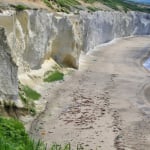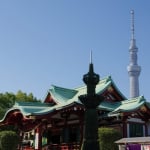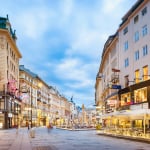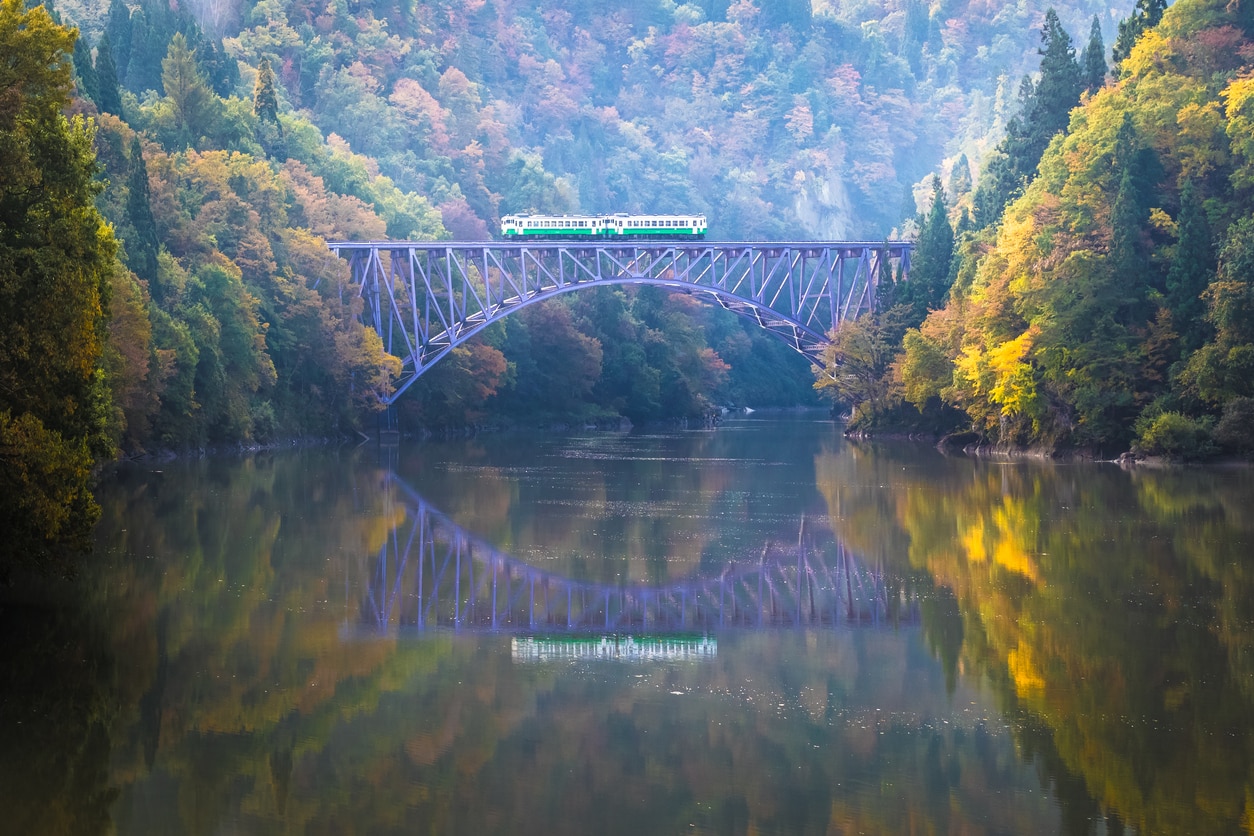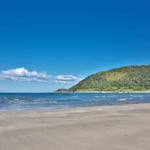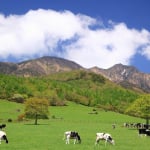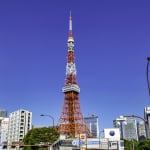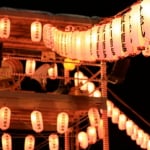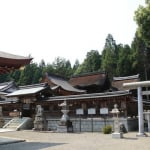Photo by www.istockphoto.com
8 Incredible Things to Do in Fukushima Prefecture
Known around the world for the nuclear disaster that happened in the prefecture in 2011, Fukushima gets a bad reputation internationally, unable to shake off its disastrous past. In reality, Fukushima is the third largest prefecture in Japan and the exclusion zone around the disaster area makes up just 2.7% of its land. Outside of the zone, radiation levels are just as normal as the rest of Japan, with a range of fascinating places to visit. While it's a shame the area still sees very little tourism from abroad, it also means those who do visit, get to see some of the country's most beautiful sites, without the crowds.
table of contents
[x] close
8 Incredible Things to Do in Fukushima Prefecture
Oze National Park
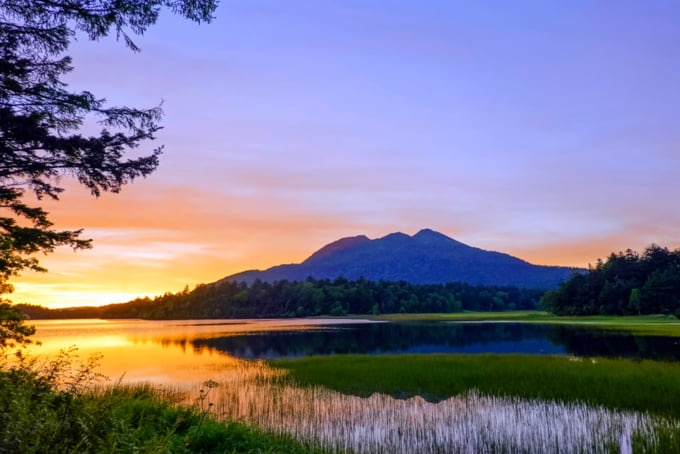
Photo by janken/Shutterstock
The area of Nikko in neighboring Tochigi Prefecture is one of the most popular (and crowded) national parks in the country. If you want to escape the crowds while still discovering some of the region's beautiful scenery head to the nearby Oze National Park. Popular for its unique wetlands, the park is spread over both Gunma and Fukushima with one of its most famous sights, Lake Ozenuma, lying in both prefectures.
Aizu-Wakamatsu
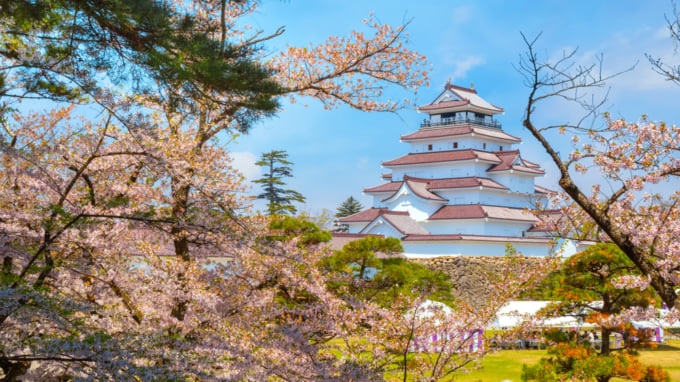
Photo by cowardlion/Shutterstock
A stunning example of one of Japan's numerous castle towns, Aizu-Wakamatsu is still steeped in Japanese traditions. Along with the impressive Tsuruga Castle that towers over the center of the city, there are a number of impressive old buildings such as Sazaedo Pagoda and Enzoji Temple. The city also makes for a great base to explore the surrounding areas of Aizu.
You'll also find nearby attractions such as Higashiyama Onsen where you can bathe in hot springs with beautiful views out over the city such as at Onyado Toho.
Mishima
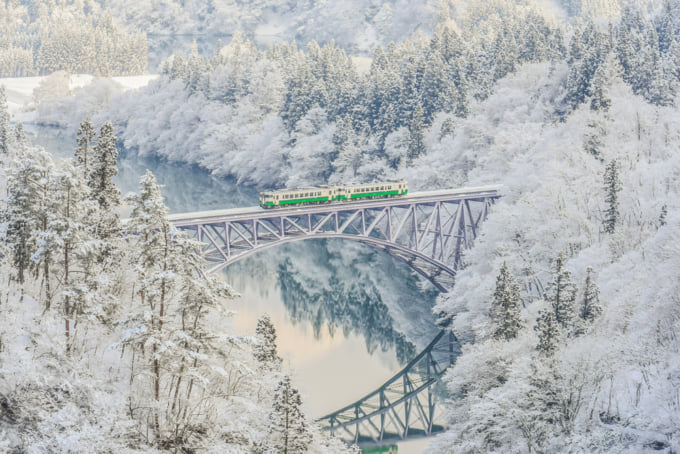
Photo by weniliou/Shutterstock
One of the many picturesque stops along the Tadami Line that traverses through the mountains from Aizu-Wakamatsu to Niigata, Mishima was selected as one of the most beautiful villages in Japan in 2017. The area is particularly known for its scenic views of railway bridges that pass over the Tadami River and between valleys. If you're visiting in February, travel further down to Tadami to see the annual snow festival, where locals make impressive statues and buildings out of snow.
Tsuchiyu Onsen
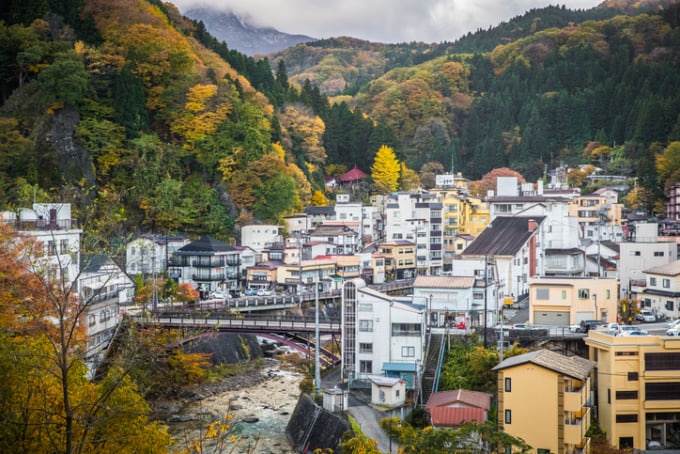
Photo by www.istockphoto.com
Another of Japan's many onsen towns filled with traditional hot springs, Tsuchiyu Onsen is nestled in the mountains near to Fukushima City. One of the most picturesque of these relaxing getaways, the mountain scenery that surrounds the town is even more beautiful in the autumn when the leaves change to a range of colors.
Goshiki-numa
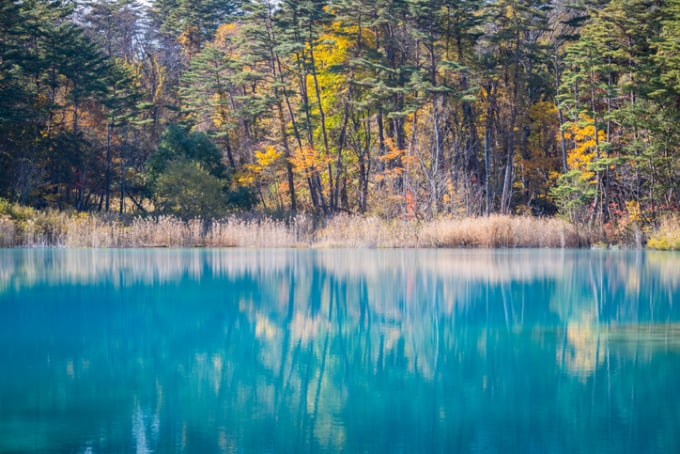
Photo by www.istockphoto.com
A group of five beautiful volcanic lakes north-east of Aizu-Wakamatsu, the Goshiki-numa lie in the shadow of Mount Bandai, which caused the colorful lakes after a destructive eruption in 1888. Noted for their distinctive colors caused by deposits of minerals, these lakes are stunning shades of bright blues, greens, browns and yellows.
Natsui River Senbon Sakura
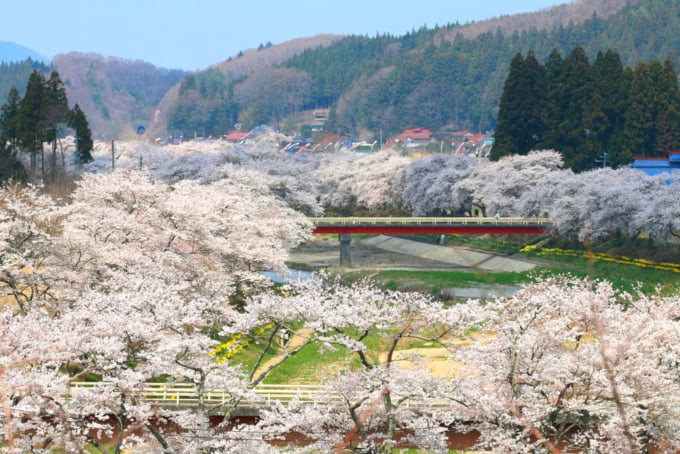
Photo by tk312001/Shutterstock
One of the best places in the country to view the beautiful cherry blossoms, 'senbon sakura' literally means a thousand cherry blossom trees, which line up on both sides of the river for around five kilometers. Another of Fukushima's popular sakura viewing spots is in Hanamiyama Park, literally translating to 'cherry blossom viewing mountain', the park runs up the side of a mountain filled with cherry blossom trees.
Ouchi-juku
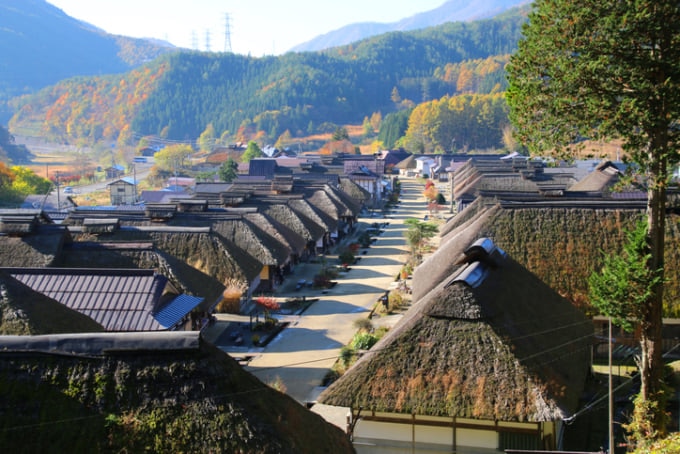
Photo by www.istockphoto.com
An old post town dating back to Japan's Edo Period, Ouchi-juku is famous for its beautiful traditional thatched houses dramatized by the surrounding rural mountain atmosphere. Ouchi-juku's large thatched roofed houses and rural environment is often compared to Shirakawago, another town full of traditional buildings. However Ouchi-juku sees much less visitors and is often much less crowded, especially in the winter season.
Mount Bandai
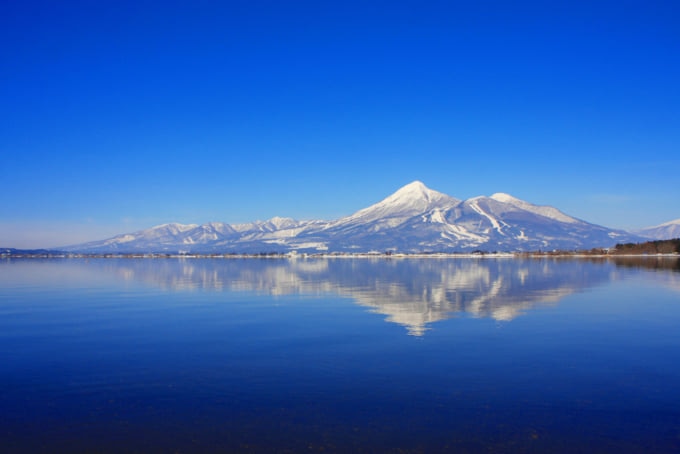
Photo by tk312001/Shutterstock
Once known as 'Aizu-Fuji' for its distinct conical shape, the volcano then erupted in 1888 changing its landscape and the surrounding area. Luckily Mt Bandai is not quite so active anymore, although just enough to power the many hot spring resorts around the area. The climb to the top is relatively easy, with the shortest route taking around two hours. From the top you'll be rewarded with stunning views across over Lake Inawashiro and the surrounding mountains.
Conclusion
Fukushima has always been one of the most underrated destinations in Japan, however since the nuclear disaster in 2011, numbers of tourists have plummeted even further. With the majority of the prefecture being perfectly safe with radiation levels as low as anywhere else around the world, there's no reason not to explore this fascinating region of Japan.
